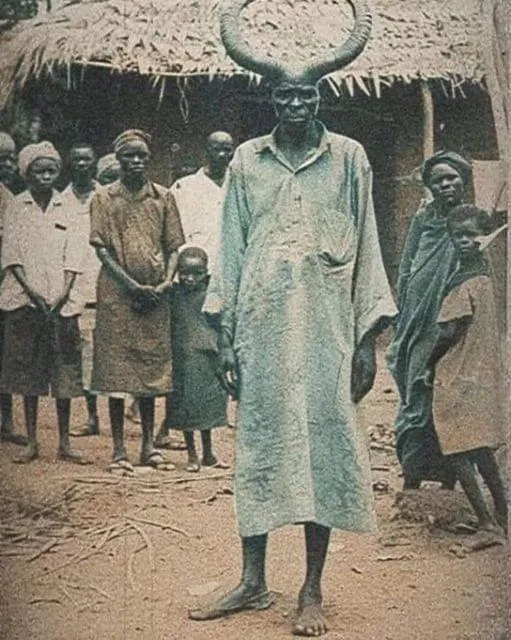In 1934, English explorer Ghost Freeman traveled to Fianga, in the Mayo-Kebbi region of Chad, attracted to stories of a man with horns living in a nearby forest

Earning the trust of the villagers, Freeman discovered NJABIA BâTÉ, a man isolated due to his horns, an unexplained phenomenon that generated fear and respect for him. NJABIA BâTÉ, though marginalized, possessed great wisdom and knowledge about nature and traditional healing methods. Freeman documented his finding, publishing an article that attracted the attention of the scientific community.
I have not been able to fact check this picture, but there is a disease called cutaneous horn.
A cutaneous horn is a growth on the skin that occurs due to excessive keratin growth. There are numerous possible causes of a cutaneous horn, ranging from skin infections to cancer.
Cutaneous horns are lesions that develop on the skin from an overgrowth of keratin. This is the protein responsible for making hair, nails, hoofs, and horns. An overgrowth of this protein is called hyperkeratosis.
The lesions usually develop in areas frequently exposed to the sun. About 60%Trusted Source of all cutaneous horns are benign, while others are cancerous or precancerous.